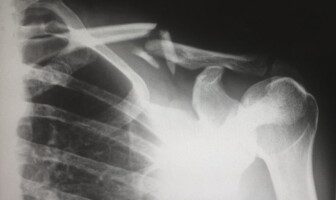
PEG-MGF, or Pegylated Mechano Growth Factor, is studied as one of the most prominent peptides in contemporary research. Studies suggest that PEG-MGF represents a modified form of insulin-like growth factor (IGF) studied for its possible role in promoting tissue development and repair.
This compound has garnered attention for its potential applications in anabolic enhancement, particularly in the repair of soft and hard tissues following injury.
Definition And Mechanism Of PEG-MGF

PEG-MGF is a splice variant of IGF-1Ec that is believed to play a crucial role in the repair of injured muscle tissue and the activation of satellite cells. Research indicates that muscle development may be influenced by various factors, including testosterone, growth hormone (HGH), and dihydrotestosterone (DHT), in addition to PEG-MGF and IGF.
The liver is known to produce certain hormones as a response to muscle injury, with growth hormone (HGH) promoting the synthesis of insulin-like growth factors, including Mechano Growth Factor (MGF).
Benefits Of PEG-MGF Peptide

This particular form of peptide is used in growth and muscle repair. There have been researches that show that PEG-MGF Peptide can differentiate muscle cells, reduce body fat and cholesterol, improve the immune system, and also the healing rate. Let’s take a look at the benefits of PEG-MGF Peptides.
Mechanistic Roles Of PEG-MGF Peptides
Investigations purport that the muscle-building properties of PEG-MGF are closely associated with the activation of stem cells. This activation is believed to lead to a rapid proliferation of muscle cells and an increase in muscle cell volume, both of which are essential for muscle growth.
Comparative Functionality Of MGF And PEG-MGF
In scientific discussions, MGF is often compared to PEG-MGF. Research indicates that MGF is synthesized in the liver and subsequently released into the bloodstream. There, its half-life is limited to approximately seven minutes due to rapid degradation. This short duration renders the basic form of MGF less useful in practical applications.
Conversely, studies suggest that the conversion of MGF into PEG-MGF might significantly enhance its stability and bioavailability. Polyethylene glycol (PEG) is incorporated into the original MGF structure to extend its half-life to several days, thereby allowing for sustained physiological activity.
Subjects engaged in physical training may naturally produce MGF, which is vital for muscle growth. Findings imply that PEG-MGF may enhance protein synthesis and nitrogen retention. Both of these are critical for increasing muscle mass and strength.
PEG-MGF In Muscle Tissue Research
Research indicates that muscle tissue undergoes expansion during the repair process following damage incurred from resistance training. The application of PEG-MGF has been hypothesized to facilitate a more efficient and rapid recovery of injured muscle tissue.
One notable property of PEG-MGF is its potential to stimulate the proliferation of neighboring, uninjured muscle cells, a phenomenon that is relatively rare without such intervention.
This characteristic is particularly significant for organisms that face challenges in muscle mass development due to genetic predispositions. Studies suggest that PEG-MGF may support the recovery and growth of injured muscle cells. It simultaneously promotes the generation of new cells in the vicinity of damaged tissues.
The relationship between muscle cell production and the Mechano Growth Factor has been established as critical in reducing recovery times for injured muscle tissue, thereby enhancing overall muscle growth.
PEG-MGF Peptides Helps In Healing
PEG MGF is mostly used in scenarios where you need enhanced anabolism. This includes soft tissue and bone repair like ligaments and tendons. It also heals muscle injury caused due to muscle wasting, sarcopenia, heart attack, or stroke.
If you have somehow injured your skeletal muscle cells, PEG MGF can improve the flow of neutrophils and macrophages to the injured site and enhance the healing process. Moreover, it also increases osteoblasts, like chondrocytes and bone mineralizing cells.
Along with skeletal muscle, it also gives protection to the myocardium by obstructing apoptosis and increasing cardiac stem cell proliferation. This was reported in a study done on mouse models who were given PEG-MGF. It showed less cell death in the 8 hours of hypoxia compared to controls.
PEG MGF peptide also has benefits in dentistry. There have been studies in the periodontal ligament cell cultures that have figured that PEG MGF can improve the expression of MMP-1 and MMP-2 and also osteogenic differentiation.
These factors improve ligament repair, which attaches the teeth to the bones. It also provides alternatives for implants and tooth extractions. It allows people to maintain their natural teeth after they have been injured. There are also beliefs that it might be able to save avulsed or damaged teeth after surgical implantation.
It also has neuroprotective effects, and studies have explored the effects of using MGF at an increased level on the central nervous system and brain for a long time. The neuronal degeneration that comes with age can also be reduced with the use of MGF.
It is an effective and safe option for patients looking to improve their repair and recovery through anabolic signaling. However, it has to be used with precaution in patients who are prone to hypoglycemia.
Conclusion
Injections and patient-specific schedules are important for avoiding tissue hypertrophy. However, there could be some side effects of using PFG MGF. Those could be a sudden drop in blood pressure, irregular heart rate, hypoglycemia, and swelling of extremities.
The properties and mechanisms of PEG-MGF peptides underscore their importance in the field of muscle tissue research. Investigations indicate that this compound may play a vital role in muscle repair and growth, particularly following injury.
Exposure to PEG-MGF has been hypothesized to facilitate the repair process by promoting both the proliferation of damaged cells and the generation of new muscle cells.
As research continues to elucidate the precise mechanisms through which PEG-MGF may operate, its implications for tissue repair and muscle development are likely to expand.
The ongoing exploration of PEG-MGF as a research tool is expected to yield valuable insights into the anabolic properties of peptides and their applications in muscle physiology.
If you are a researcher, you can buy PEG-MGF online for research purposes only.
Read Also:




























